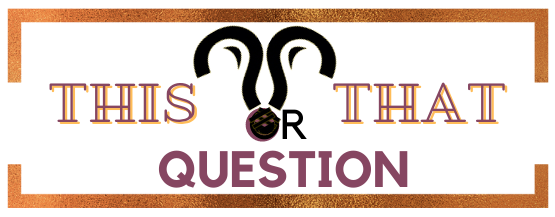EST vs EDT: What’s the Difference?
EST and EDT are two acronyms that refer to different time zones in the United States, but they can be confusing to those who don’t know the difference. EST stands for Eastern Standard Time and EDT stands for Eastern Daylight Time.
The main difference between EST and EDT is that EST is the standard time zone used in the winter when Daylight Saving Time is not in effect, while EDT is the time zone used in the summer when Daylight Saving Time is in effect. When Daylight Saving Time is in effect, the time is typically advanced by one hour, and EDT is then used.
The Eastern Standard Time Zone (EST) covers the states east of the Mississippi River and parts of Canada. This time zone is five hours behind Coordinated Universal Time (UTC). During the winter months, EST is observed in the region from November to March. The Eastern Daylight Time Zone (EDT) is used in the region from March to November. EDT is four hours behind Coordinated Universal Time (UTC).
When it is noon in Eastern Standard Time (EST) zone, it is 11am Central Standard Time (CST). When it is noon in Eastern Daylight Time (EDT) zone, it is 10am Central Standard Time (CST).
It is important to remember that when Daylight Saving Time is in effect, clocks move forward by one hour. This means that when it is 7am EST, it will be 8am EDT.
In summary, EST is the time zone used in the winter when Daylight Saving Time is not in effect, while EDT is the time zone used in the summer when Daylight Saving Time is in effect. EST is 5 hours behind Coordinated Universal Time (UTC) while EDT is 4 hours behind Coordinated Universal Time (UTC). When Daylight Saving Time is in effect, the time is typically advanced by one hour, and EDT is then used.EST vs EDT: What’s the Difference?
EST and EDT are two acronyms that refer to different time zones in the United States, but they can be confusing to those who don’t know the difference. EST stands for Eastern Standard Time and EDT stands for Eastern Daylight Time.
The main difference between EST and EDT is that EST is the standard time zone used in the winter when Daylight Saving Time is not in effect, while EDT is the time zone used in the summer when Daylight Saving Time is in effect. When Daylight Saving Time is in effect, the time is typically advanced by one hour, and EDT is then used.
The Eastern Standard Time Zone (EST) covers the states east of the Mississippi River and parts of Canada. This time zone is five hours behind Coordinated Universal Time (UTC). During the winter months, EST is observed in the region from November to March. The Eastern Daylight Time Zone (EDT) is used in the region from March to November. EDT is four hours behind Coordinated Universal Time (UTC).
When it is noon in Eastern Standard Time (EST) zone, it is 11am Central Standard Time (CST). When it is noon in Eastern Daylight Time (EDT) zone, it is 10am Central Standard Time (CST).
It is important to remember that when Daylight Saving Time is in effect, clocks move forward by one hour. This means that when it is 7am EST, it will be 8am EDT.
In summary, EST is the time zone used in the winter when Daylight Saving Time is not in effect, while EDT is the time zone used in the summer when Daylight Saving Time is in effect. EST is 5 hours behind Coordinated Universal Time (UTC) while EDT is 4 hours behind Coordinated Universal Time (UTC). When Daylight Saving Time is in effect, the time is typically advanced by one hour, and EDT is then used.EST vs EDT: What’s the Difference?
EST and EDT are two acronyms that refer to different time zones in the United States, but they can be confusing to those who don’t know the difference. EST stands for Eastern Standard Time and EDT stands for Eastern Daylight Time.
The main difference between EST and EDT is that EST is the standard time zone used in the winter when Daylight Saving Time is not in effect, while EDT is the time zone used in the summer when Daylight Saving Time is in effect. When Daylight Saving Time is in effect, the time is typically advanced by one hour, and EDT is then used.
The Eastern Standard Time Zone (EST) covers the states east of the Mississippi River and parts of Canada. This time zone is five hours behind Coordinated Universal Time (UTC). During the winter months, EST is observed in the region from November to March. The Eastern Daylight Time Zone (EDT) is used in the region from March to November. EDT is four hours behind Coordinated Universal Time (UTC).
When it is noon in Eastern Standard Time (EST) zone, it is 11am Central Standard Time (CST). When it is noon in Eastern Daylight Time (EDT) zone, it is 10am Central Standard Time (CST).
It is important to remember that when Daylight Saving Time is in effect, clocks move forward by one hour. This means that when it is 7am EST, it will be 8am EDT.
In summary, EST is the time zone used in the winter when Daylight Saving Time is not in effect, while EDT is the time zone used in the summer when Daylight Saving Time is in effect. EST is 5 hours behind Coordinated Universal Time (UTC) while EDT is 4 hours behind Coordinated Universal Time (UTC). When Daylight Saving Time is in effect, the time is typically advanced by one hour, and EDT is then used.EST vs EDT: What’s the Difference?
EST and EDT are two acronyms that refer to different time zones in the United States, but they can be confusing to those who don’t know the difference. EST stands for Eastern Standard Time and EDT stands for Eastern Daylight Time.
The main difference between EST and EDT is that EST is the standard time zone used in the winter when Daylight Saving Time is not in effect, while EDT is the time zone used in the summer when Daylight Saving Time is in effect. When Daylight Saving Time is in effect, the time is typically advanced by one hour, and EDT is then used.
The Eastern Standard Time Zone (EST) covers the states east of the Mississippi River and parts of Canada. This time zone is five hours behind Coordinated Universal Time (UTC). During the winter months, EST is observed in the region from November to March. The Eastern Daylight Time Zone (EDT) is used in the region from March to November. EDT is four hours behind Coordinated Universal Time (UTC).
When it is noon in Eastern Standard Time (EST) zone, it is 11am Central Standard Time (CST). When it is noon in Eastern Daylight Time (EDT) zone, it is 10am Central Standard Time (CST).
It is important to remember that when Daylight Saving Time is in effect, clocks move forward by one hour. This means that when it is 7am EST, it will be 8am EDT.
In summary, EST is the time zone used in the winter when Daylight Saving Time is not in effect, while EDT is the time zone used in the summer when Daylight Saving Time is in effect. EST is 5 hours behind Coordinated Universal Time (UTC) while EDT is 4 hours behind Coordinated Universal Time (UTC). When Daylight Saving Time is in effect, the time is typically advanced by one hour, and EDT is then used.


